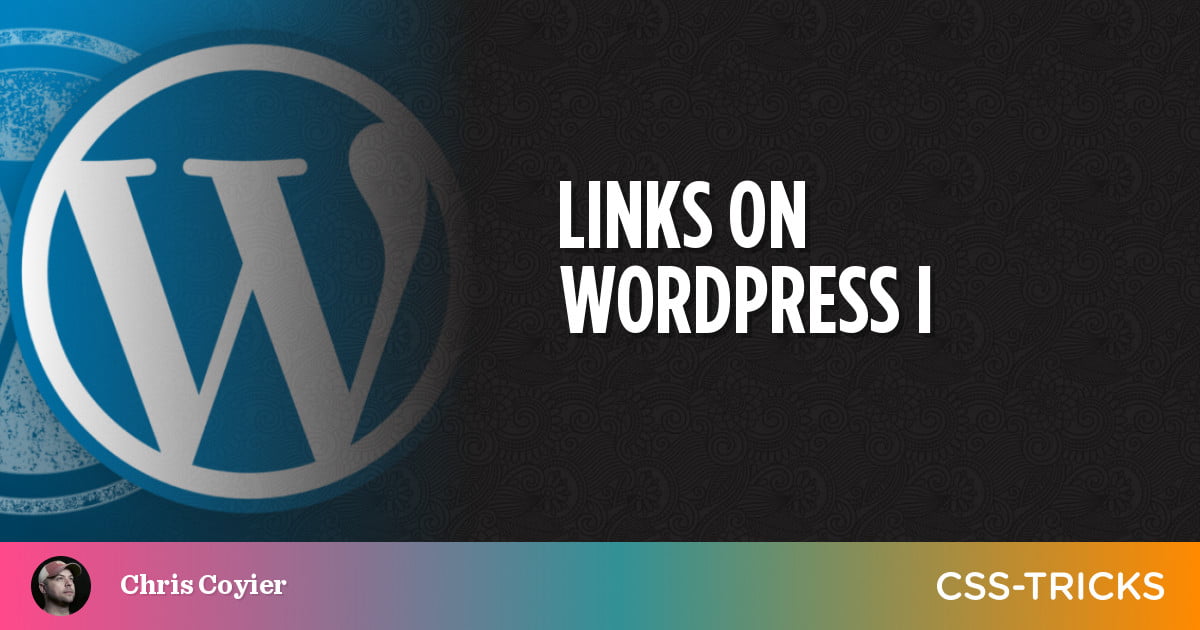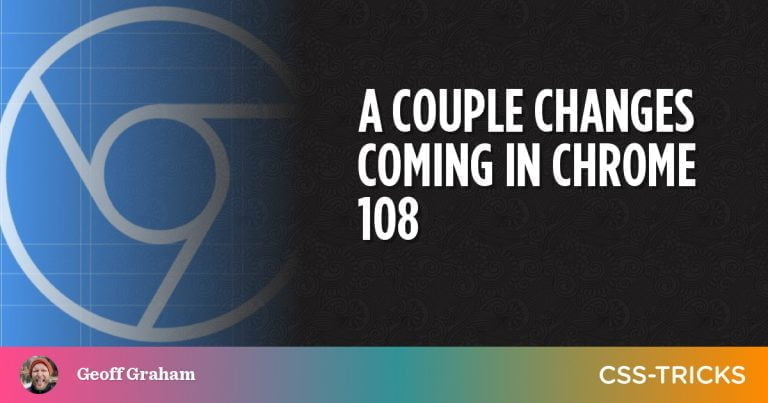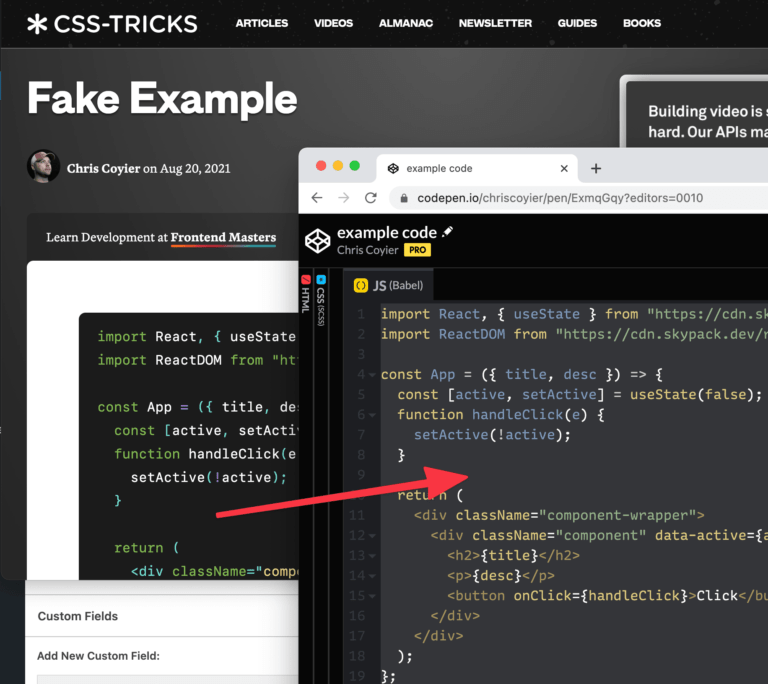
I try to keep up with WordPress news because I’m a big WordPress user and have many production sites that run on it. WordPress has been good to me as a site builder for literally my entire career. So, like we do with typography (example), accessibility (example), and JavaScript (example), I’m hoping to occasionally drop packs of links things I find particularly interesting in that ecosystem.
- Advanced Custom Fields: A Guide to Custom Fields and ACF Blocks by Iain Poulson — “ACF is exactly what WordPress as a Content Management System (CMS) has been missing when it comes to having more control over your content.” Exactly. ACF is a big deal for WordPress, making it into a proper CMS when you need to have that specific control over data modeling. You might think the block editor fights back on the need for ACF a little, but no, ACF’s custom block solution is pretty damn good, making it almost even more valuable. This is a good overview.
- Make Unique Designs by Combining Blocks by Mel Choyce — The Block Editor is truly capable of crafting compelling and highly designed pages. Linking to the slides here, but the magic is in the video below the slides. Starting at 13:00, you can see Mel showcase pages built with the Block Editor and literally no additional plugins. Between Columns, Spacers, and Cover blocks alone, you can get pretty dang fancy.
- WP Engine Makes Local Pro Free for All Users by Sarah Gooding — Pretty cool of Flywheel (owned by WP Engine) to make Local entirely free. It used to have a PRO version with some compelling features worth paying for, so it feels like many of us will literally save money. I can’t imagine working with WordPress locally without Local anymore, it’s so good. My favorite little baby feature is the one-click admin login. No cluttering up my password manager with a bunch of dumb local site logins. (Disclosure: Flywheel sponsors this site.)
- Simpler Block Spacing in WordPress with :is() and :where() by Michelle Barker — The Block Editor brings its own HTML classes that we now have to deal with in our own themes (and admin styles). The nesting can lead to pretty gnarly CSS selectors, but they end up cleaner thanks to the comma-sperated powers of these pseudo selectors.
- Faust.js, the Framework For Headless WordPress by Will Johnston — WP Engine has created Faust, a “framework for building front-end applications for headless WordPress sites. Faust.js provides tooling to reduce the pains of building a headless WordPress site (namely around data fetching, authentication, previews, and SSR/SSG) while offering a pleasant experience for both developers and publishers.” It’s based on Next.js.
- Proposal for a Performance team by Ari Stathopoulos — “Compared to other platforms (e.g., Wix, Shopify, Squarespace), WordPress is falling behind. Other platforms are on average faster – and becoming increasingly faster – than WordPress websites, and are actively investing in (and marketing) core performance-as-a-feature.” Seems like a smart move to me, to have a team dedicated to this long-term. But it’s also an extremely tall order. Themes and plugins, which WordPress itself doesn’t directly control, are the biggest influence on performance.
- Theme.json for WordPress Block Themes explained by Ellen Bauer — I really need to bone up on this myself. This is a new file that’s a part of themes that is going to have a lot of control over styling information. Seems like the future and not to be avoided, although a much bigger deal for sites that get into “full site editing” (FSE). Eric Karkovack has another intro post on all this. And speaking of full site editing, Annie McCarthy has a roundup of Q & A from people concerned about specific things as FSE marches forward.
- Query Loop: The Ins and Outs of One of WordPress 5.8’s Most Powerful Features by Justin Tadlock — The Query Block seems like a very big deal, especially for full site editing. If you don’t have a template file you can use to execute a
WP_Querythen… where do you do it? In a Query Block, soon. Looks like it’ll be fun to use, as not only do you query for what you want, but you apply design patterns to the results visually. I imagine there is going to be a lot of opportunity in shipping patterns for this block. - Encute by Mark Jaquith — a “WordPress plugin for fluent management of scripts and styles.” I used to use MinQueue for this, but it looks long dead. What I liked about MinQueue is it had a visual component that would show you all the scripts and styles that were enqueued on any page, so you knew the full list of what was there, and then take action. I used it to turn off crap that plugins loaded that I didn’t want. Or even if I did, I’d take the resource and load it myself so I could properly concatinate it (becoming less of an issue with HTTP/2).
The #1 tool I use to save links to review later is Notion Web Clipper. I kick links over to one big table in Notion then I read them and tag them when I have time. My flow is essentially RSS (Firehose) → Notion (Good finds) → WordPress (Best of).






